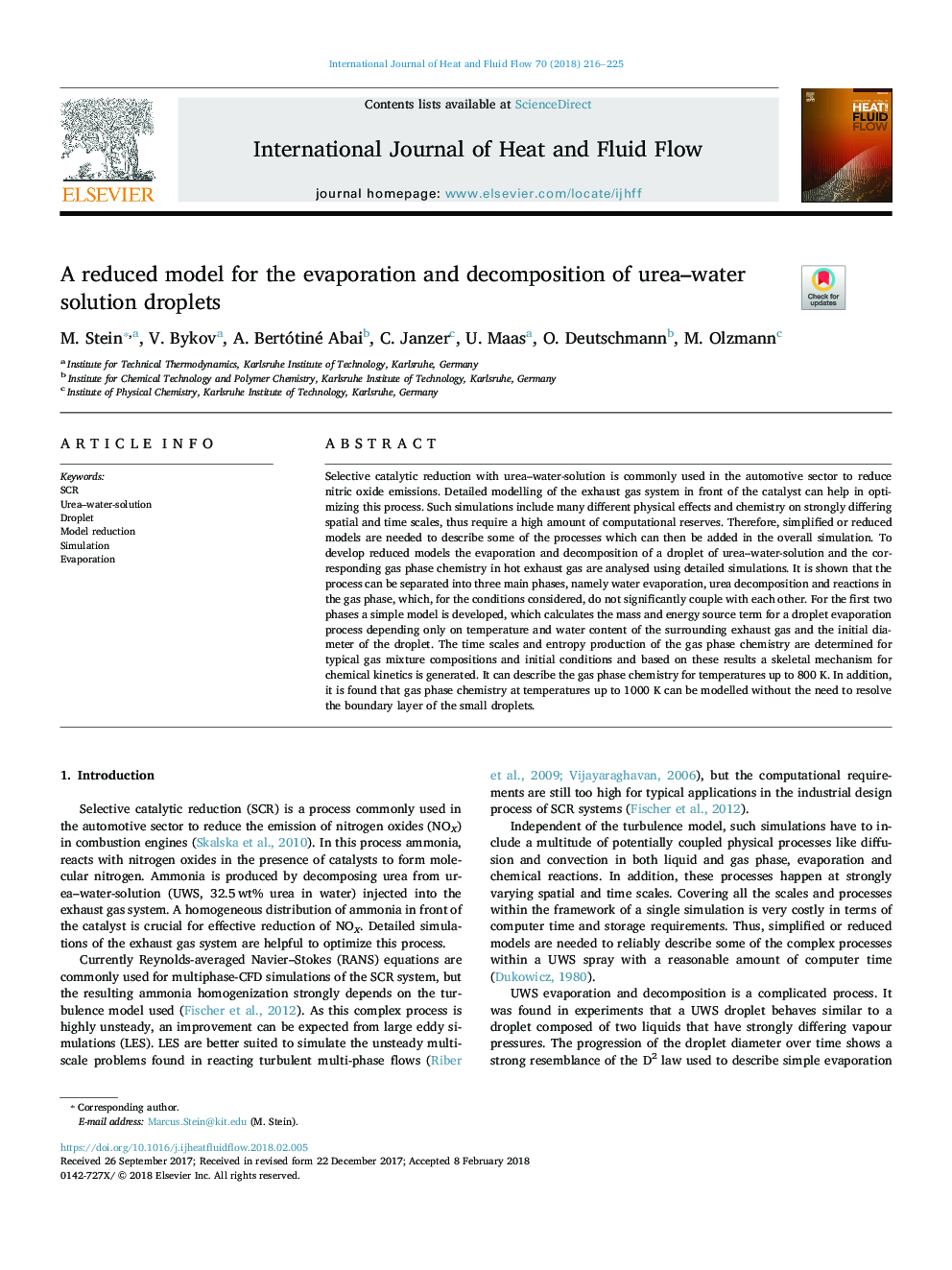| Article ID | Journal | Published Year | Pages | File Type |
|---|---|---|---|---|
| 7053499 | International Journal of Heat and Fluid Flow | 2018 | 10 Pages |
Abstract
Selective catalytic reduction with urea-water-solution is commonly used in the automotive sector to reduce nitric oxide emissions. Detailed modelling of the exhaust gas system in front of the catalyst can help in optimizing this process. Such simulations include many different physical effects and chemistry on strongly differing spatial and time scales, thus require a high amount of computational reserves. Therefore, simplified or reduced models are needed to describe some of the processes which can then be added in the overall simulation. To develop reduced models the evaporation and decomposition of a droplet of urea-water-solution and the corresponding gas phase chemistry in hot exhaust gas are analysed using detailed simulations. It is shown that the process can be separated into three main phases, namely water evaporation, urea decomposition and reactions in the gas phase, which, for the conditions considered, do not significantly couple with each other. For the first two phases a simple model is developed, which calculates the mass and energy source term for a droplet evaporation process depending only on temperature and water content of the surrounding exhaust gas and the initial diameter of the droplet. The time scales and entropy production of the gas phase chemistry are determined for typical gas mixture compositions and initial conditions and based on these results a skeletal mechanism for chemical kinetics is generated. It can describe the gas phase chemistry for temperatures up to 800Â K. In addition, it is found that gas phase chemistry at temperatures up to 1000Â K can be modelled without the need to resolve the boundary layer of the small droplets.
Related Topics
Physical Sciences and Engineering
Chemical Engineering
Fluid Flow and Transfer Processes
Authors
M. Stein, V. Bykov, A. Bertótiné Abai, C. Janzer, U. Maas, O. Deutschmann, M. Olzmann,
